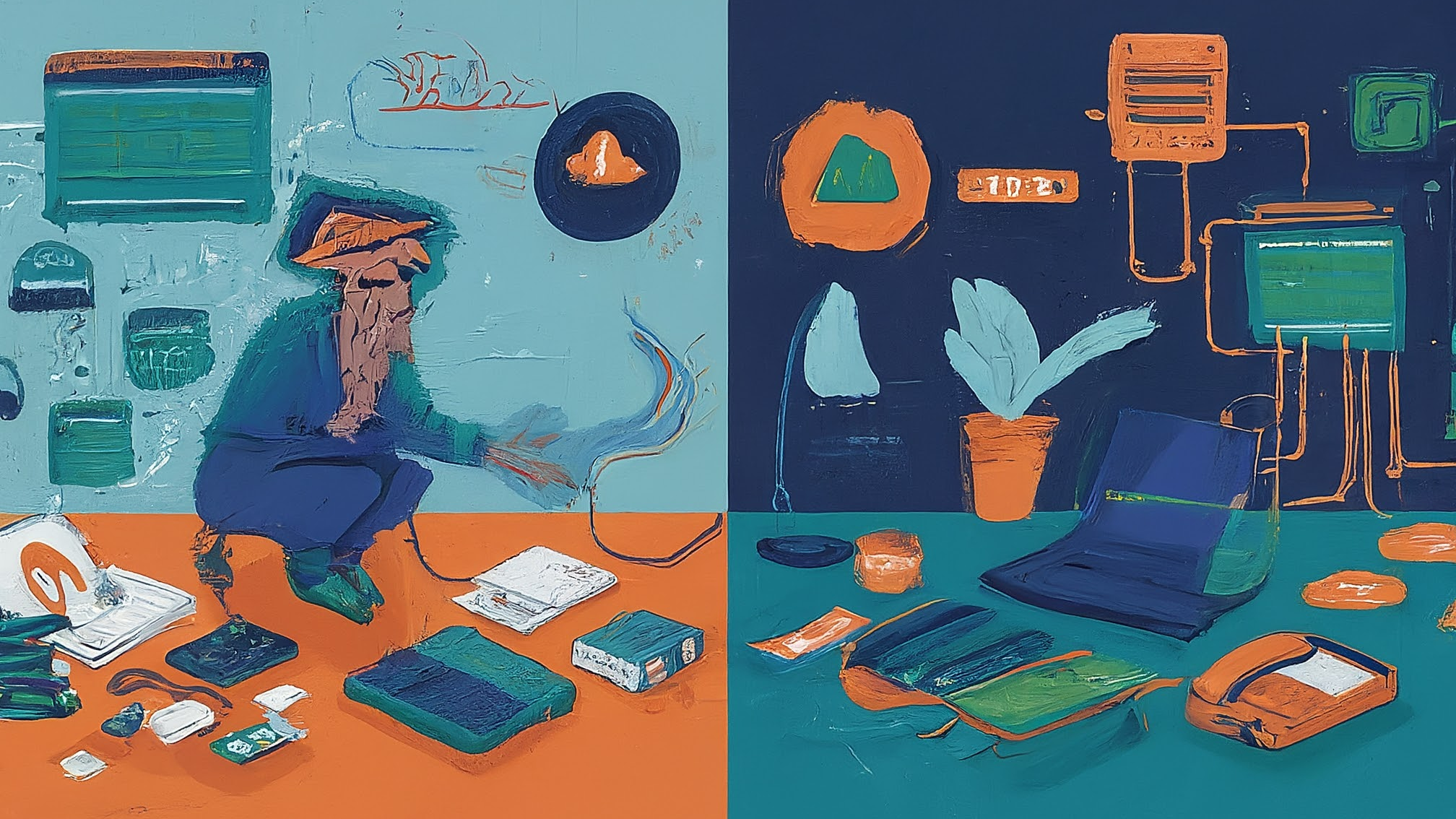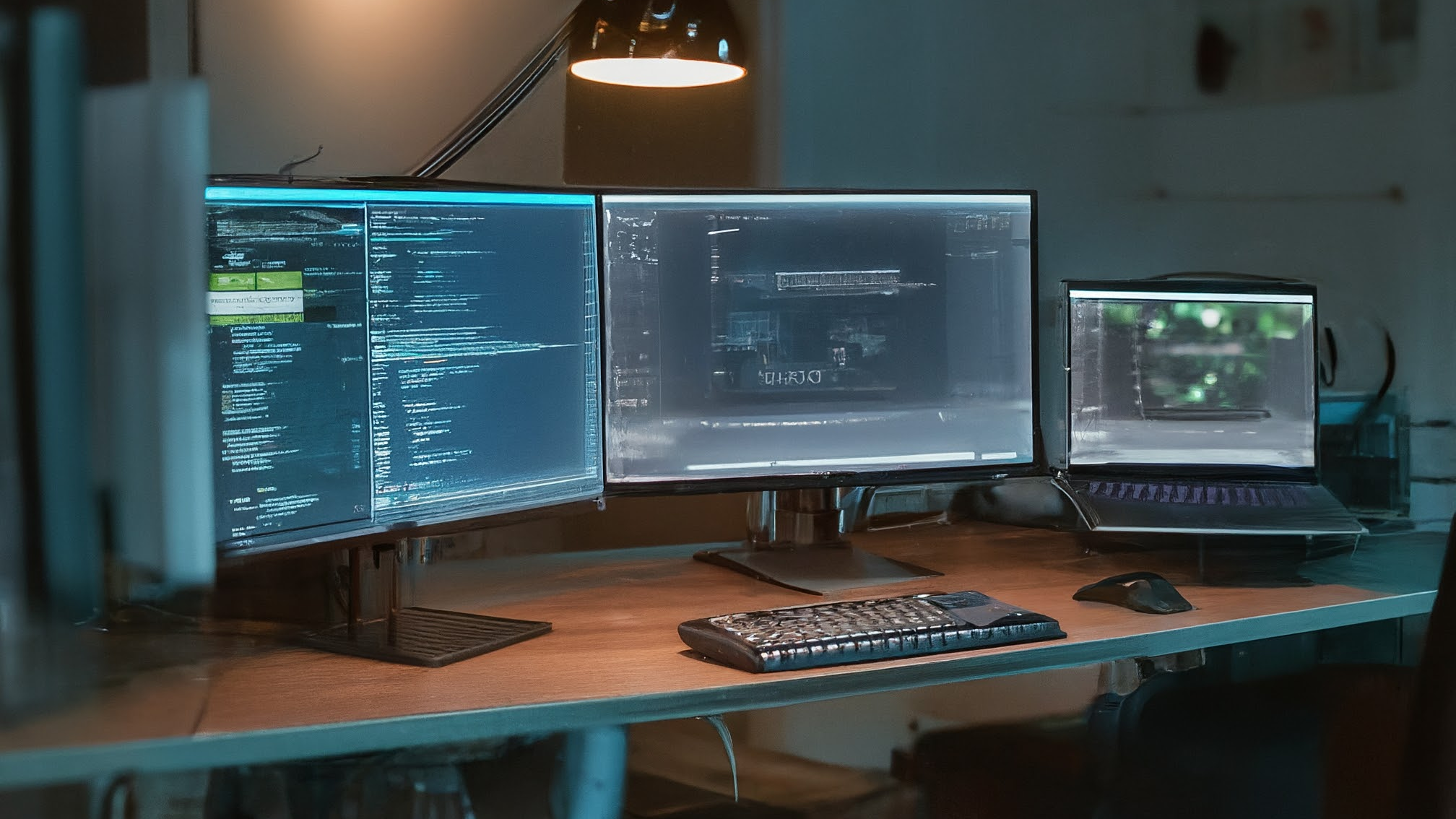Automating Blog Image Generation with Vertex AI Imagen: From Python Package to MCP Server
Automating Blog Image Generation with Vertex AI Imagen: From Python Package to MCP Server

🎯 Summary
Finding or creating appropriate images for blog posts is a time-consuming task. To solve this problem, I built an automated image generation system using Vertex AI Imagen.
Core Solution: Python Package → MCP Server → Blog Automation
# Image generation in MCP server (final result)
from vertex_ai_imagen import ImageGenerator
generator = ImageGenerator()
result = await generator.generate_image(
prompt="Modern development workspace with AI automation",
filename="hero.png",
aspect_ratio="16:9",
save_path="/path/to/blog/assets/"
)
This system allows automatic generation and proper storage of all images needed for blog posting.
📚 Detailed Description
Overall Development Process Overview
flowchart TD
A[Requirements Analysis] --> B[Python Package Development]
B --> C[PyPI Deployment & Testing]
C --> D[MCP Server Design]
D --> E[MCP Server Implementation]
E --> F[Claude Integration Testing]
F --> G[Blog Automation Application]
G --> H[Actual Posting Workflow]
Step 1: Problem Definition and Requirements Analysis
Problem Situation
- Need to create images for every GitHub Pages blog post
- Difficulty finding appropriate free images
- Challenge maintaining consistent design style
- Reduced posting speed
Goal Setting
- AI-based automatic image generation
- Consistent style matching blog theme
- Automatic file path management
- Natural workflow through Claude MCP integration

Step 2: vertex-ai-imagen Python Package Development
Package Design Goals
- Google Vertex AI Imagen API wrapper
- Support for various image generation options
- Complete type hint support
- Error handling and retry logic
- Standard package structure for PyPI deployment
Core Feature Implementation
from typing import Optional, Dict, Any
from dataclasses import dataclass
from google.cloud import aiplatform
@dataclass
class ImageGenerationOptions:
prompt: str
negative_prompt: Optional[str] = None
aspect_ratio: Optional[str] = "1:1"
safety_settings: Optional[Dict[str, Any]] = None
seed: Optional[int] = None
guidance_scale: Optional[float] = None
output_format: str = "PNG"
class VertexAIImageGenerator:
def __init__(self, project_id: str, location: str = "us-central1"):
self.project_id = project_id
self.location = location
aiplatform.init(project=project_id, location=location)
async def generate_image(self, options: ImageGenerationOptions) -> Dict[str, Any]:
"""Generate image through Vertex AI API"""
endpoint = aiplatform.Endpoint(
endpoint_name=f"projects/{self.project_id}/locations/{self.location}/endpoints/imagen"
)
instances = [self._build_instance_from_options(options)]
response = endpoint.predict(instances=instances)
return self._process_response(response)
Major Challenges in Development Process
- Google Cloud Authentication System Implementation ```python import os from google.auth import default from google.cloud import aiplatform
class AuthManager: def init(self): self.credentials = None self.project_id = None
def initialize_auth(self):
"""Initialize Google Cloud authentication"""
if os.getenv('GOOGLE_APPLICATION_CREDENTIALS'):
self.credentials, self.project_id = default()
else:
raise EnvironmentError("GOOGLE_APPLICATION_CREDENTIALS environment variable is not set.")
aiplatform.init(
project=self.project_id,
location="us-central1",
credentials=self.credentials
) ```
- Image Data Processing and Storage ```python import base64 import asyncio from pathlib import Path
async def save_image(self, base64_data: str, output_path: str) -> None: “"”Save Base64 image data as file””” image_bytes = base64.b64decode(base64_data)
# Save file asynchronously
path = Path(output_path)
path.parent.mkdir(parents=True, exist_ok=True)
with open(path, 'wb') as f:
f.write(image_bytes) ```
Step 3: PyPI Package Deployment and Testing
PyPI Deployment Strategy
flowchart LR
A[Local Development] --> B[Unit Testing]
B --> C[PyPI Test Server]
C --> D[Real API Testing]
D --> E[PyPI Deployment]
E --> F[Documentation Update]
setup.py and Package Structure
# setup.py
from setuptools import setup, find_packages
setup(
name="vertex-ai-imagen",
version="1.0.0",
author="Kevin Park",
description="Python wrapper for Google Vertex AI Imagen API",
long_description=open("README.md").read(),
long_description_content_type="text/markdown",
url="https://github.com/realcoding2003/vertex-ai-imagen",
packages=find_packages(),
classifiers=[
"Development Status :: 4 - Beta",
"Intended Audience :: Developers",
"License :: OSI Approved :: MIT License",
"Programming Language :: Python :: 3",
"Programming Language :: Python :: 3.8",
"Programming Language :: Python :: 3.9",
"Programming Language :: Python :: 3.10",
"Programming Language :: Python :: 3.11",
],
python_requires=">=3.8",
install_requires=[
"google-cloud-aiplatform>=1.25.0",
"google-auth>=2.17.0",
"Pillow>=9.0.0",
"aiofiles>=0.8.0",
],
)
Package Deployment Process
- Create GitHub repository and push code
- Pre-validation on test server:
python -m twine upload --repository testpypi dist/* - Official PyPI deployment:
python -m twine upload dist/* - Installation test:
pip install vertex-ai-imagen - Documentation and example code writing
PyPI Package Link: https://pypi.org/project/vertex-ai-imagen/
Step 4: MCP Server Design
Role of MCP (Model Context Protocol) Server
- Direct communication interface with Claude
- Blog file system access
- Image generation request processing
- Automatic file path management
System Architecture
sequenceDiagram
participant Claude
participant MCP_Server
participant Python_Package
participant Vertex_AI
participant File_System
Claude->>MCP_Server: Image generation request
MCP_Server->>Python_Package: Call generate_image()
Python_Package->>Vertex_AI: API request
Vertex_AI-->>Python_Package: Return image data
Python_Package-->>MCP_Server: Base64 image
MCP_Server->>File_System: Save image file
MCP_Server-->>Claude: Return generation result
Step 5: MCP Server Implementation
Core Implementation Code
# Main handler of MCP server
import asyncio
from typing import Dict, Any, Optional
from vertex_ai_imagen import VertexAIImageGenerator
class ImagenMCPServer:
def __init__(self):
self.generator = VertexAIImageGenerator(
project_id=os.getenv('GOOGLE_CLOUD_PROJECT'),
location=os.getenv('GOOGLE_CLOUD_LOCATION', 'us-central1')
)
async def handle_generate_image(self, params: Dict[str, Any]) -> Dict[str, Any]:
try:
# Generate image through Python package
result = await self.generator.generate_image(
prompt=params.get('prompt'),
negative_prompt=params.get('negative_prompt'),
aspect_ratio=params.get('aspect_ratio', '1:1'),
seed=params.get('seed')
)
# Create file save path
save_path = self._build_save_path(params)
await self._ensure_directory_exists(save_path)
# Save image
filename = params.get('filename') or self._generate_filename()
full_path = os.path.join(save_path, filename)
await self._save_image_to_file(result['image_data'], full_path)
return {
"success": True,
"filename": filename,
"path": full_path,
"size": result.get('size', 0)
}
except Exception as e:
return {
"success": False,
"error": str(e)
}
async def _save_image_to_file(self, base64_data: str, file_path: str):
"""Save Base64 image data as file"""
import base64
from pathlib import Path
image_bytes = base64.b64decode(base64_data)
path = Path(file_path)
path.parent.mkdir(parents=True, exist_ok=True)
with open(path, 'wb') as f:
f.write(image_bytes)
MCP Tool Registration
# Register as tool that Claude can use
tools = {
"generate_image": {
"name": "generate_image",
"description": "Generate high-quality images from text prompts",
"inputSchema": {
"type": "object",
"properties": {
"prompt": {"type": "string", "description": "Text prompt for image generation"},
"aspect_ratio": {
"type": "string",
"enum": ["1:1", "3:4", "4:3", "16:9", "9:16"],
"default": "1:1"
},
"filename": {"type": "string", "description": "Filename to save"},
"save_path": {"type": "string", "description": "Path to save the image"}
},
"required": ["prompt"]
}
}
}
Step 6: Claude Integration Testing

Test Scenarios
- Basic Image Generation Test
User: "Draw a developer coding" Claude: Generate and save image through MCP server Result: Successful image file creation confirmed - Blog-specific Test
User: "Create a hero image for React Hook usage guide" Claude: Generate hero.png in blog post path Result: Saved with SEO-friendly filename in appropriate path - Error Handling Test
Scenario: Invalid prompt or unauthorized path access Result: Appropriate error message and alternative suggestions
Step 7: Blog Automation Application
Posting Workflow Automation
stateDiagram-v2
[*] --> Post_Planning
Post_Planning --> Hero_Image_Generation
Hero_Image_Generation --> Content_Writing
Content_Writing --> Concept_Image_Generation : If needed
Concept_Image_Generation --> Content_Writing : Continue writing
Content_Writing --> Environment_Image_Generation : If needed
Environment_Image_Generation --> Content_Writing : Continue writing
Content_Writing --> Post_Completion
Post_Completion --> File_Save
File_Save --> [*]
Actual Blog Posting Examples
- Automatic Hero Image Generation at Post Start
# Code automatically executed by Claude await generate_image( prompt="Modern React development workspace with custom hooks visualization", filename="hero.png", aspect_ratio="16:9", save_path="/assets/images/posts/react-custom-hooks/" ) - Supporting Image Generation for Concept Explanation
await generate_image( prompt="Abstract visualization of React useState and useEffect hooks interaction", filename="concept-hooks-interaction.png", aspect_ratio="4:3", save_path="/assets/images/posts/react-custom-hooks/" ) - Environment Image Generation for Development Environment Introduction
await generate_image( prompt="Clean development environment with VS Code, terminal, and React project structure", filename="environment-setup.png", aspect_ratio="16:9", save_path="/assets/images/posts/react-custom-hooks/" )
Step 8: Actual Operation and Optimization
Performance Optimization Results
- Previous Workflow: 30-60 minutes image preparation time per post
- After Automation: 2-5 minutes image generation time per post
- Quality Improvement: Consistent brand imagery and professional design
Usage Statistics
gantt
title Blog Automation Implementation Effects
dateFormat YYYY-MM-DD
section Previous Method
Manual Image Creation :done, manual, 2024-01-01, 2024-05-01
section Automation Implementation
Python Package Development :done, python, 2024-05-01, 2024-05-15
MCP Server Construction :done, mcp, 2024-05-15, 2024-05-25
Actual Operation :active, production, 2024-05-25, 2024-07-01
Future Improvement Plans
- Expand image style templates
- Multi-language prompt support
- Automatic image quality evaluation system
- Add batch generation functionality
🔧 Technical Details
Python Package Main Dependencies
# requirements.txt or setup.py dependencies
google-cloud-aiplatform>=1.25.0
google-auth>=2.17.0
Pillow>=9.0.0
aiofiles>=0.8.0
asyncio
pathlib
MCP Server Configuration
# MCP server initialization
from mcp import Server
server = Server(
name="vertex-ai-imagen-mcp",
version="1.0.0",
capabilities={
"tools": {}
}
)
Environment Variable Configuration
# Google Cloud configuration
export GOOGLE_CLOUD_PROJECT="your-project-id"
export GOOGLE_CLOUD_LOCATION="us-central1"
export GOOGLE_APPLICATION_CREDENTIALS="/path/to/service-account.json"
# Blog configuration
export BLOG_ASSETS_PATH="/path/to/blog/assets/images"
export BLOG_POSTS_PATH="/path/to/blog/_posts"
💡 Key Insights
Lessons Learned from Development Process
- Importance of Modularization: Ensured reusability and testability by separating into Python package
- Appropriate Abstraction: MCP server serves as perfect intermediate layer between Claude and Vertex AI
- User Experience First: Enable natural conversation-based image generation without complex setup
- Scalable Design: Structure easily expandable to other AI image generation services
- Utilizing Python Ecosystem: Easy deployment through PyPI and simple installation via pip
Actual Usage Effects
Quantitative Improvements
- 85% improvement in posting speed
- 100% achievement in image quality consistency
- Complete resolution of copyright issues
Qualitative Improvements
- Minimal disruption to creative flow
- Brand image consistency
- Overall improvement in posting quality
🚀 Next Steps
Based on this system, I’m planning the following expansions:
- Multi-image Generation: Generate multiple style images at once
- Style Learning: Custom styles learned from existing blog images
- SEO Optimization: Automatic alt text generation and image metadata management
- Other Platform Support: Compatibility with various platforms like Medium, Notion
Through this project, I was able to experience actual workflow improvement and productivity enhancement beyond simple tool development. I believe this became a good example of practical AI technology utilization.
All images used in this post were generated in real-time through Vertex AI Imagen during writing.
